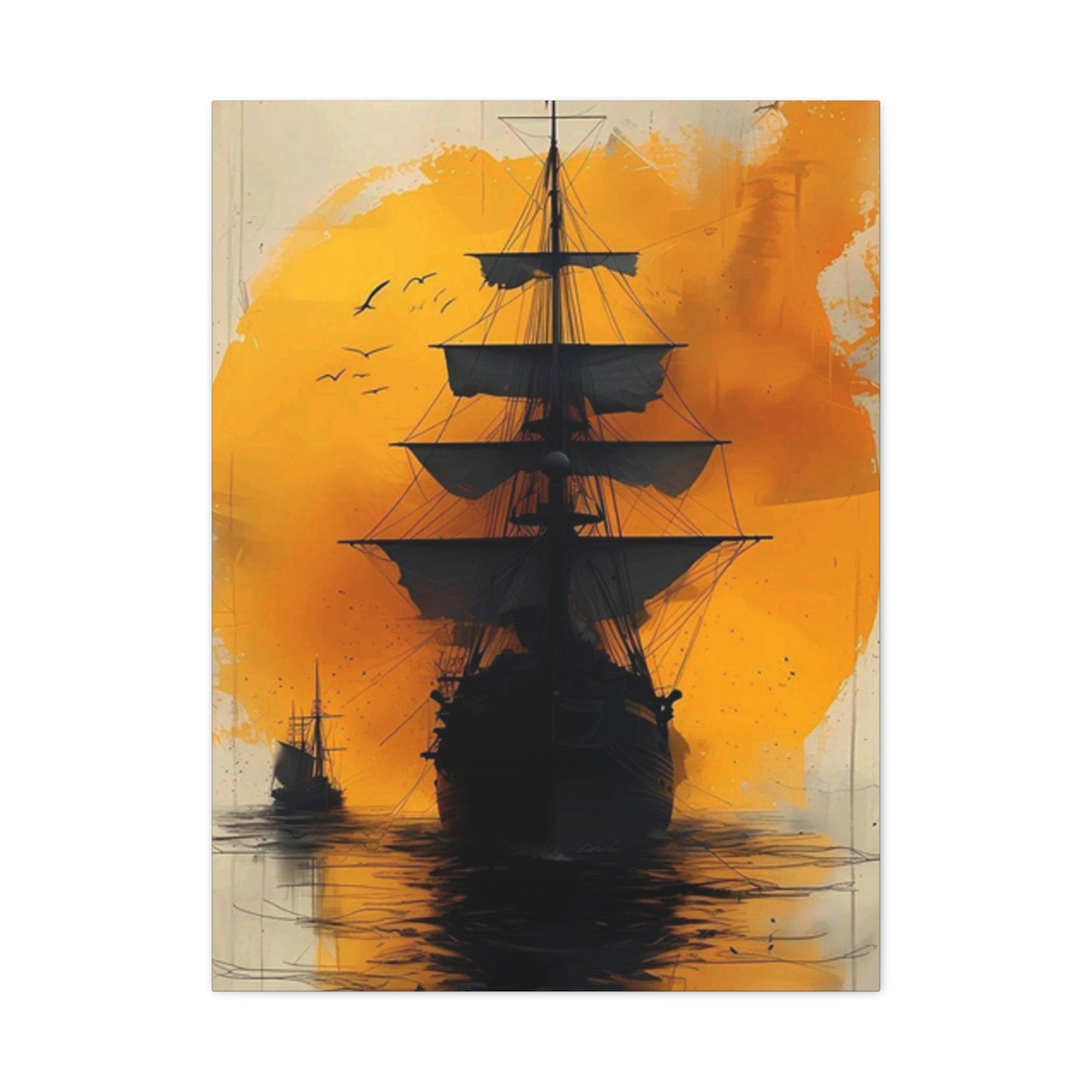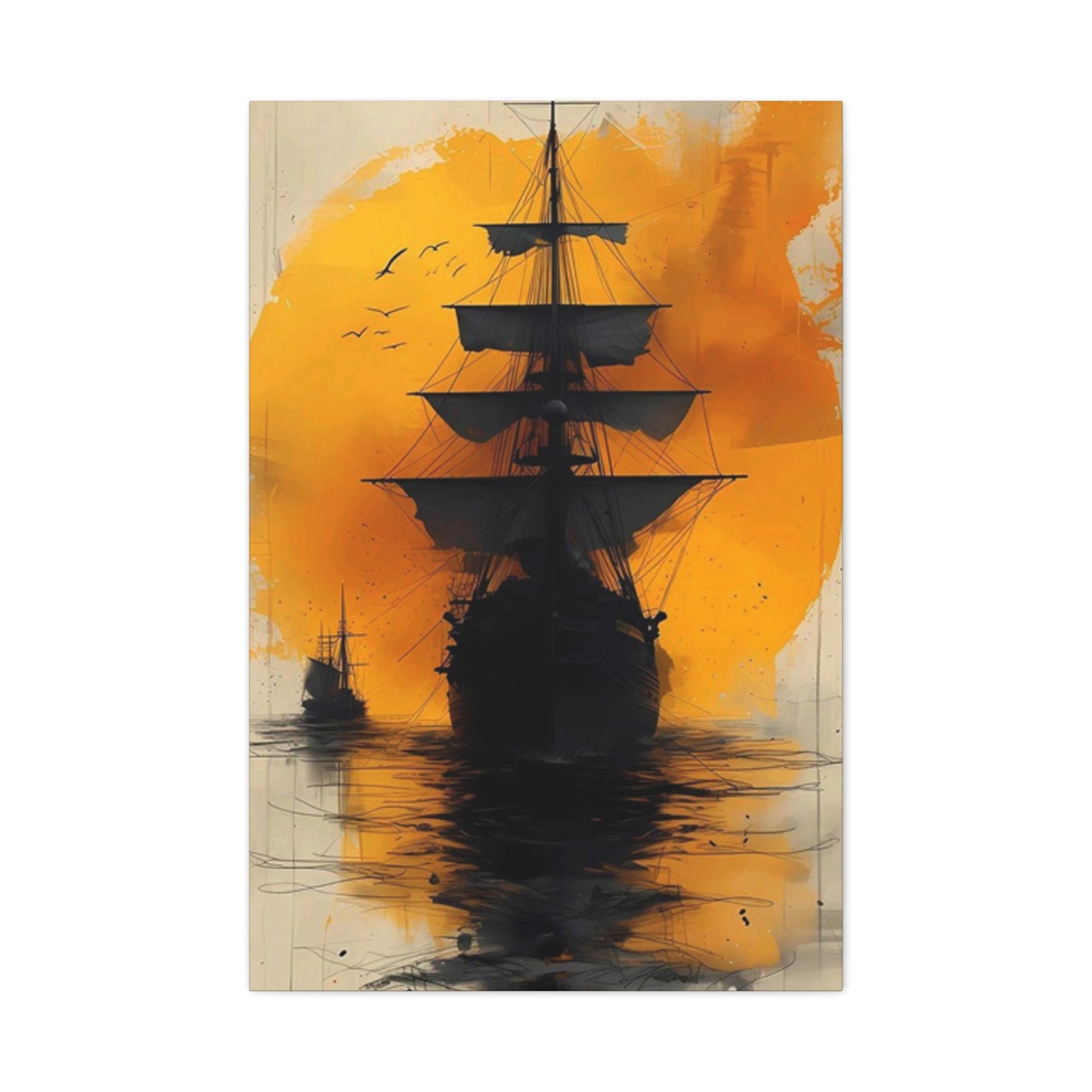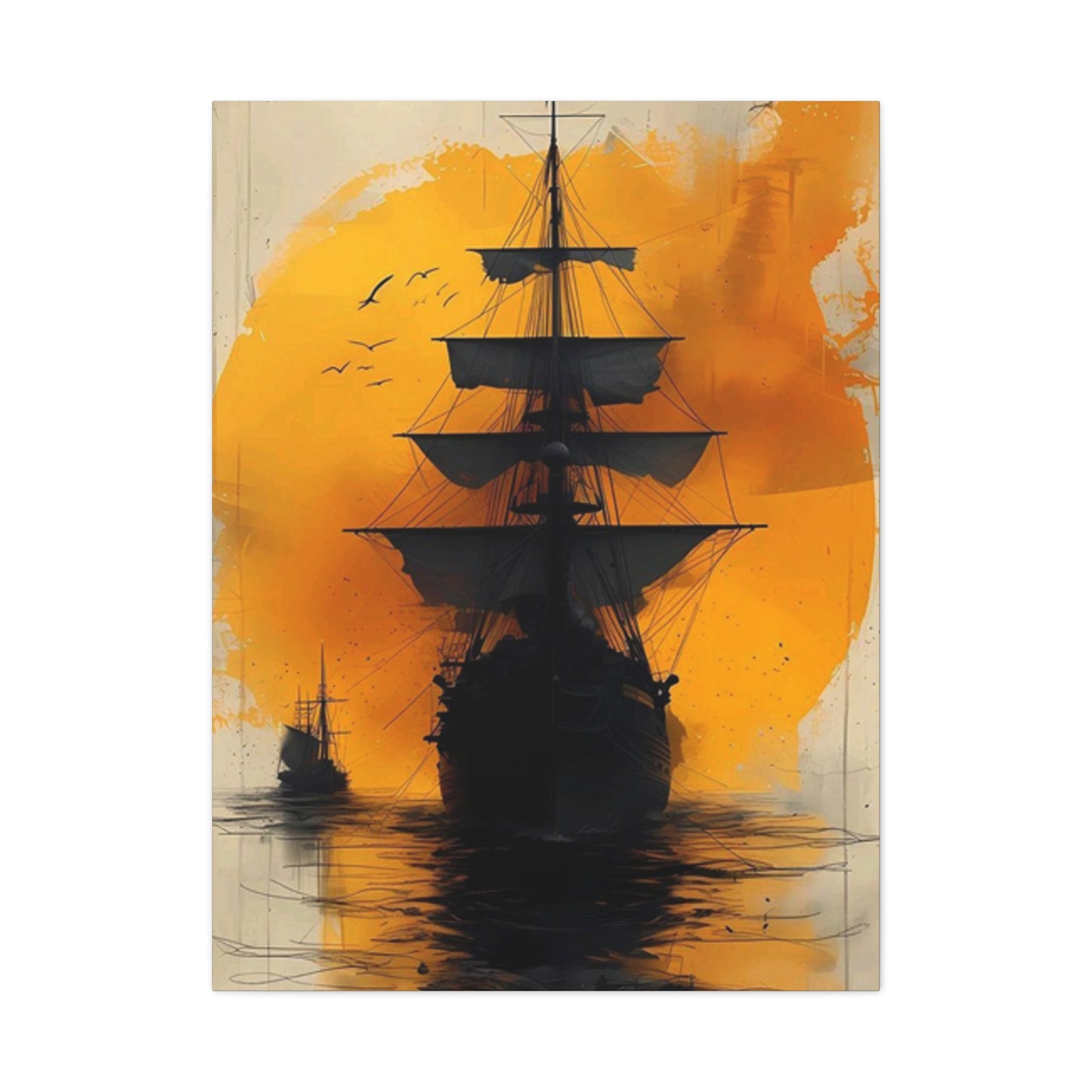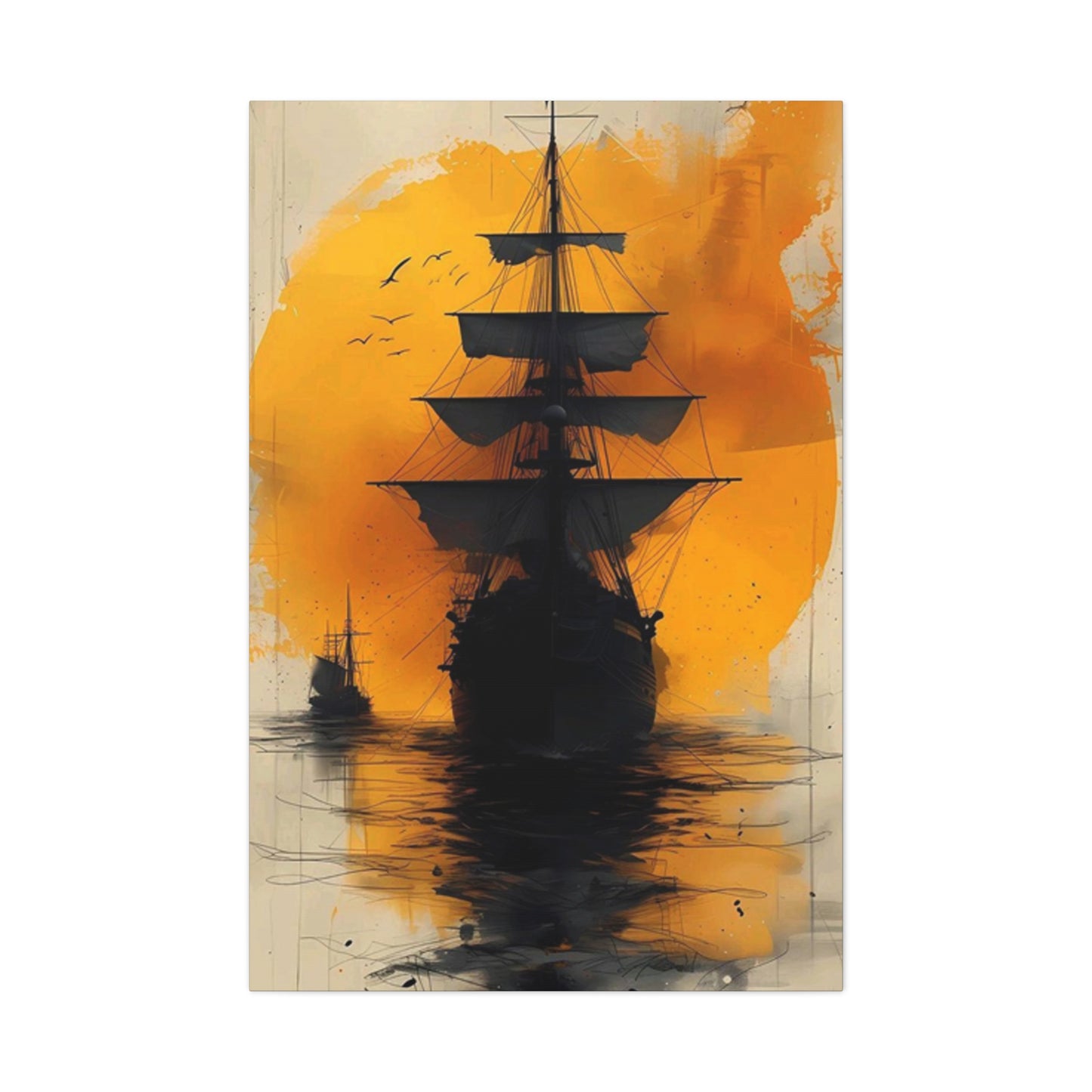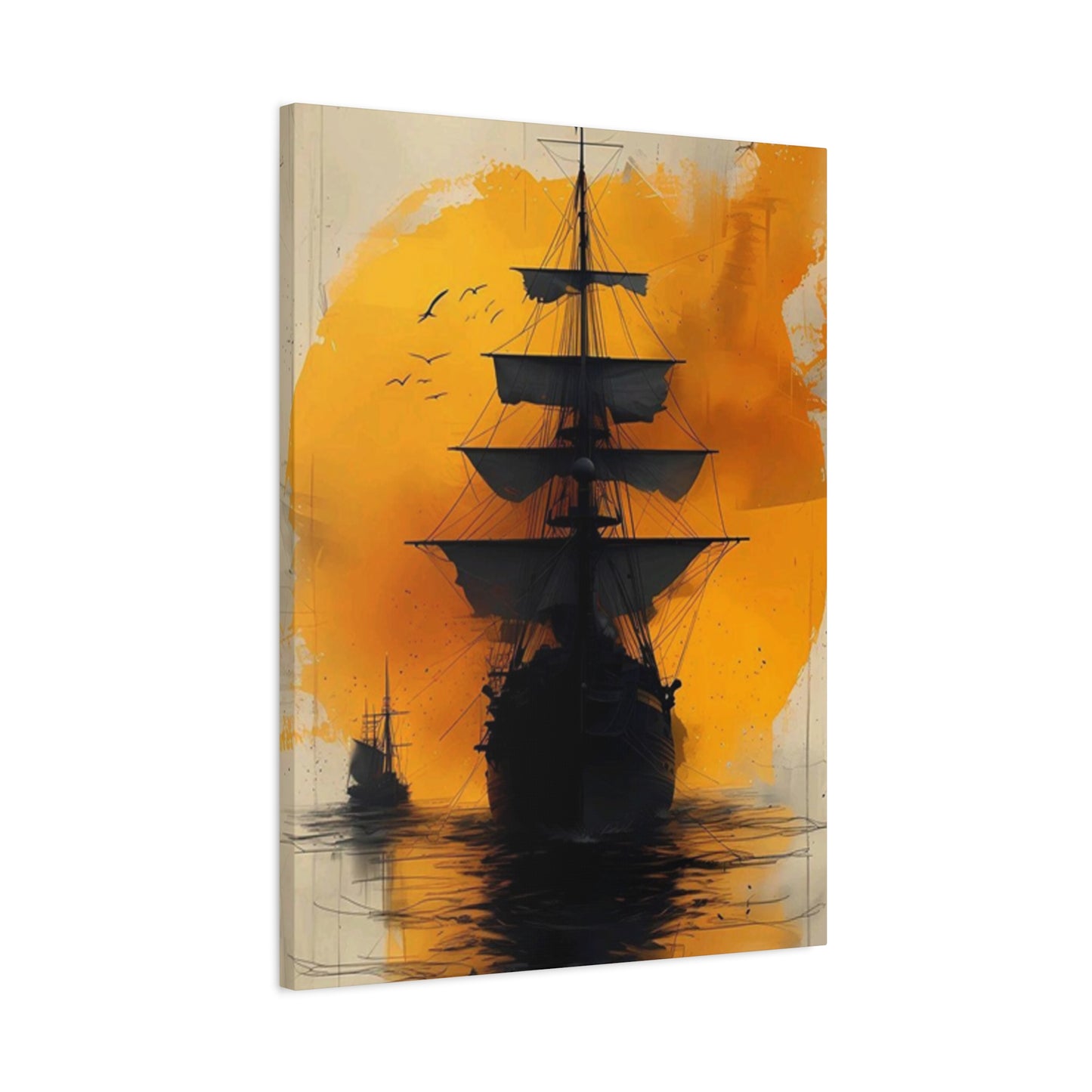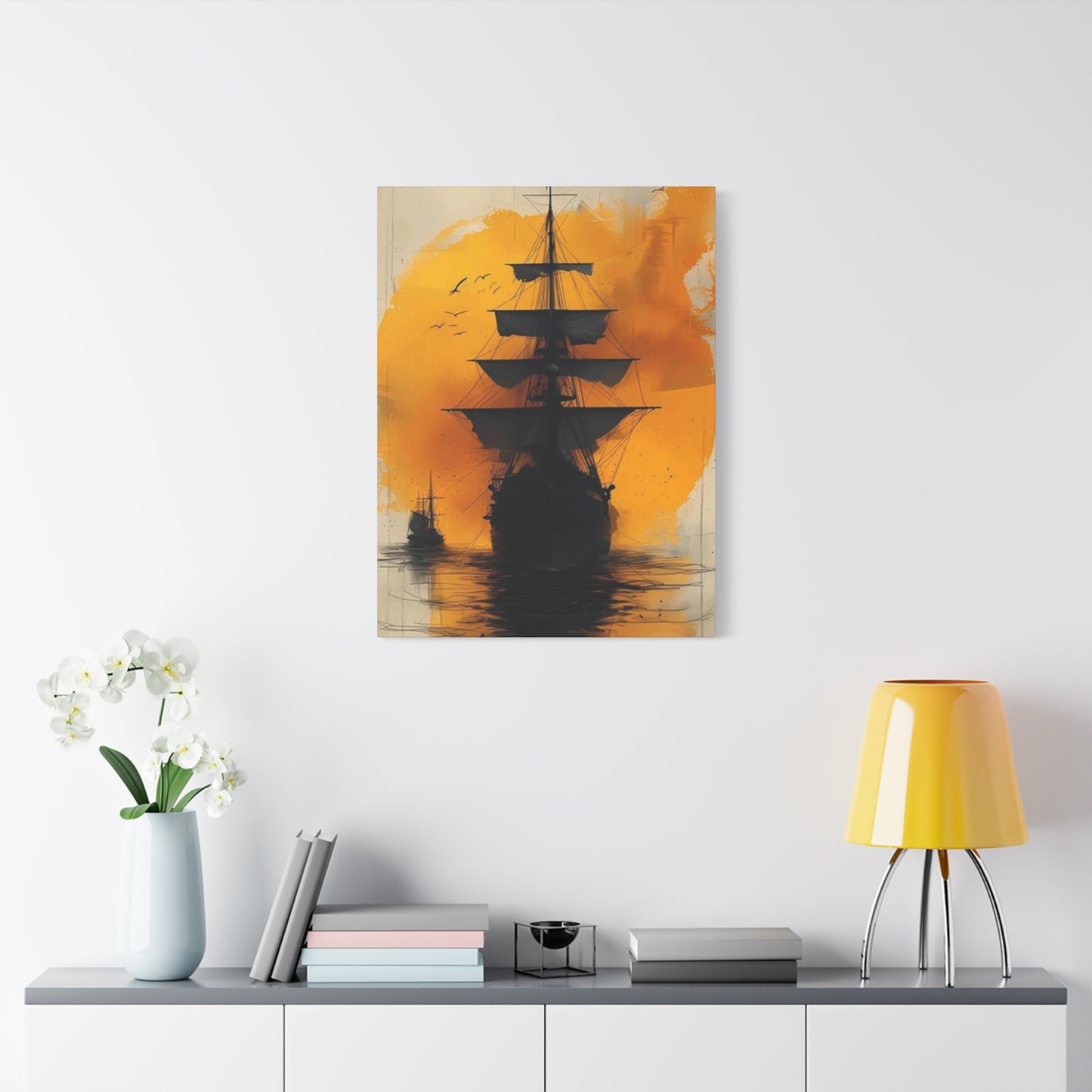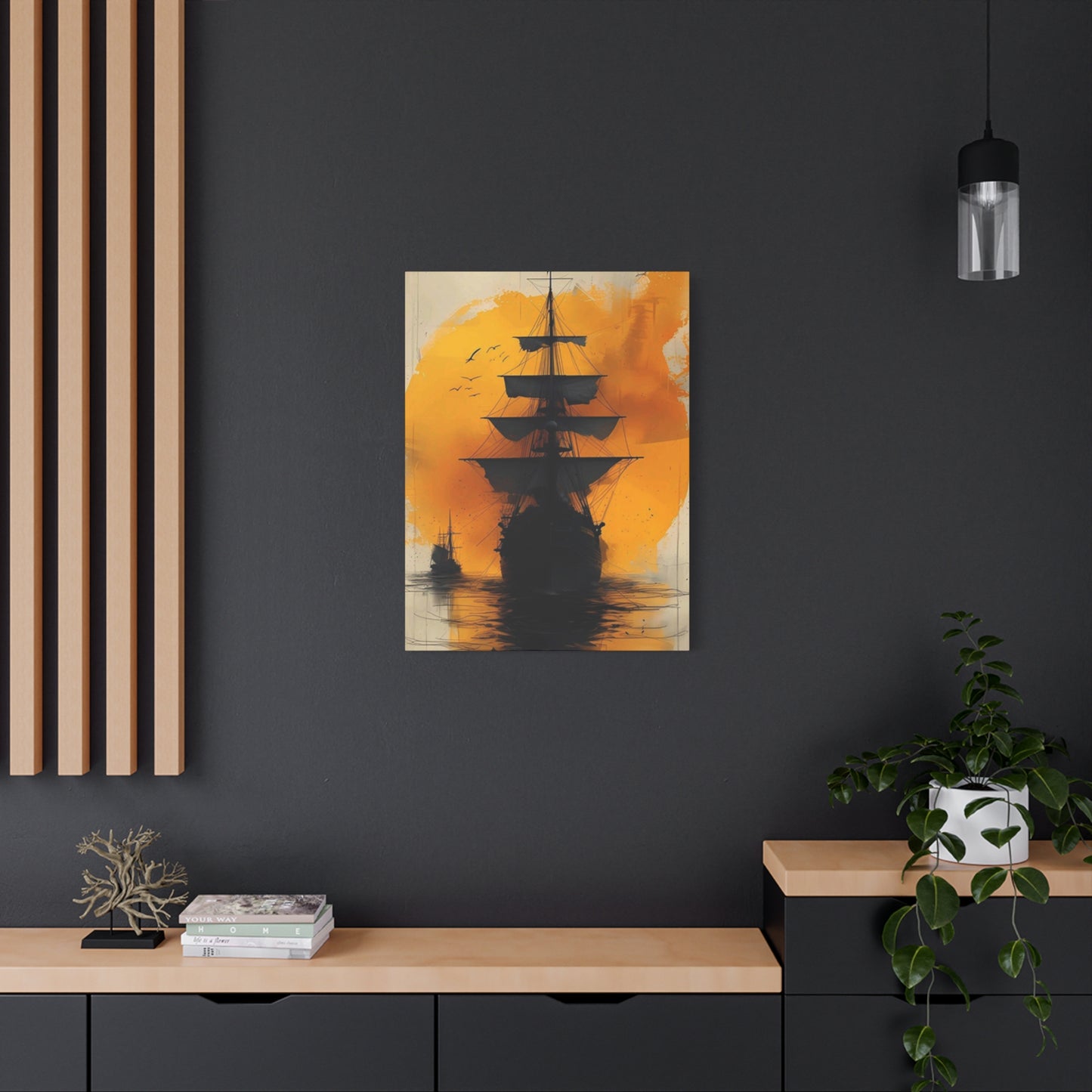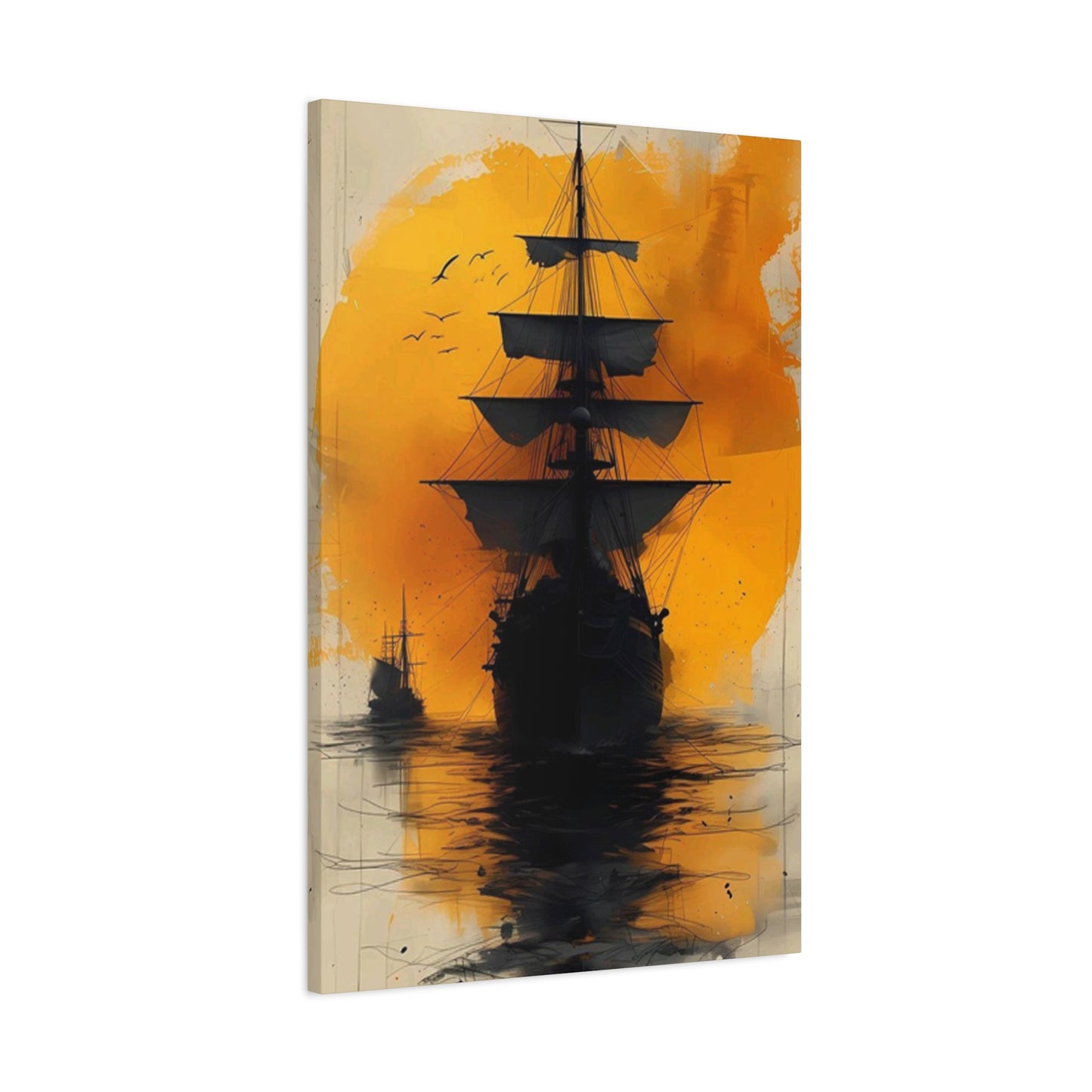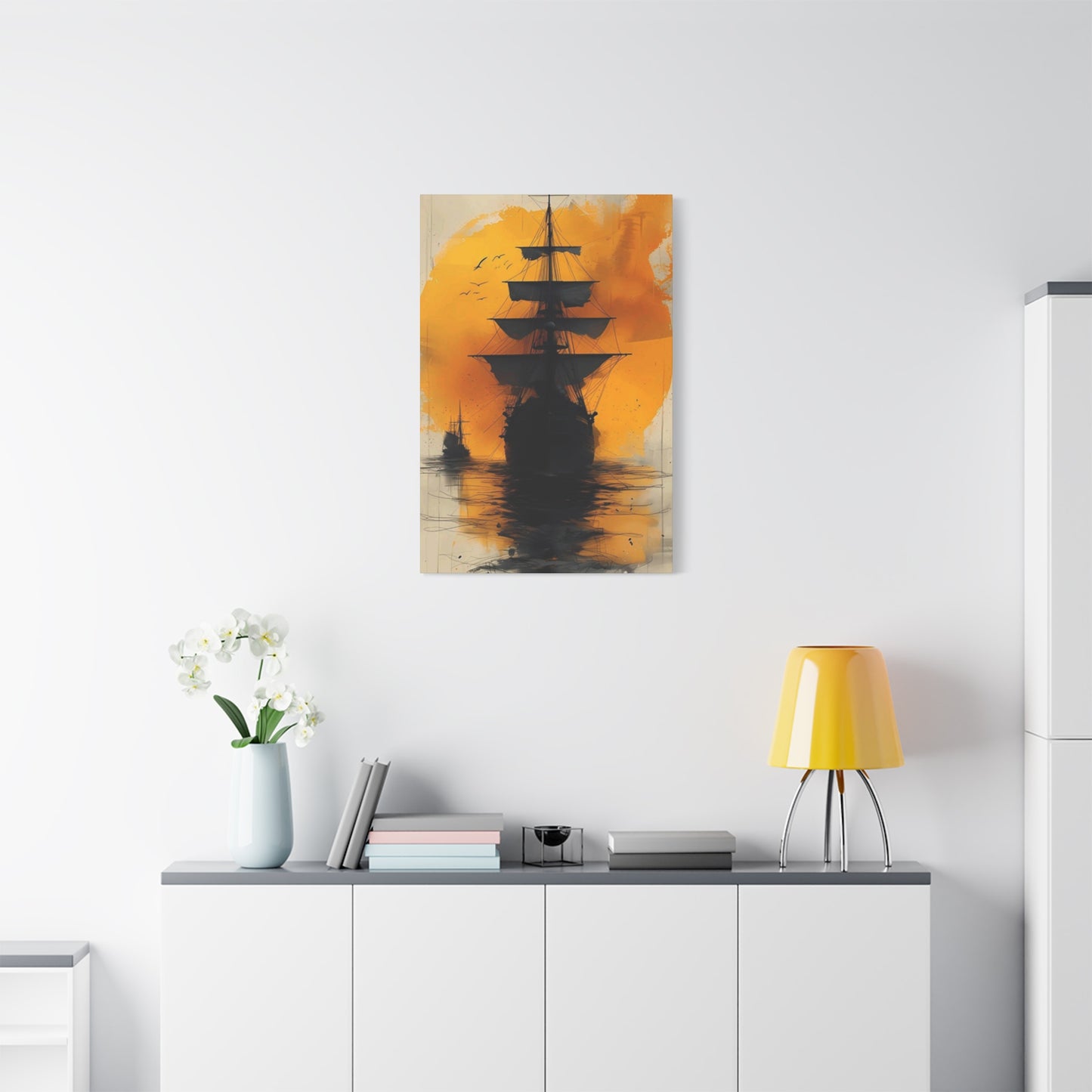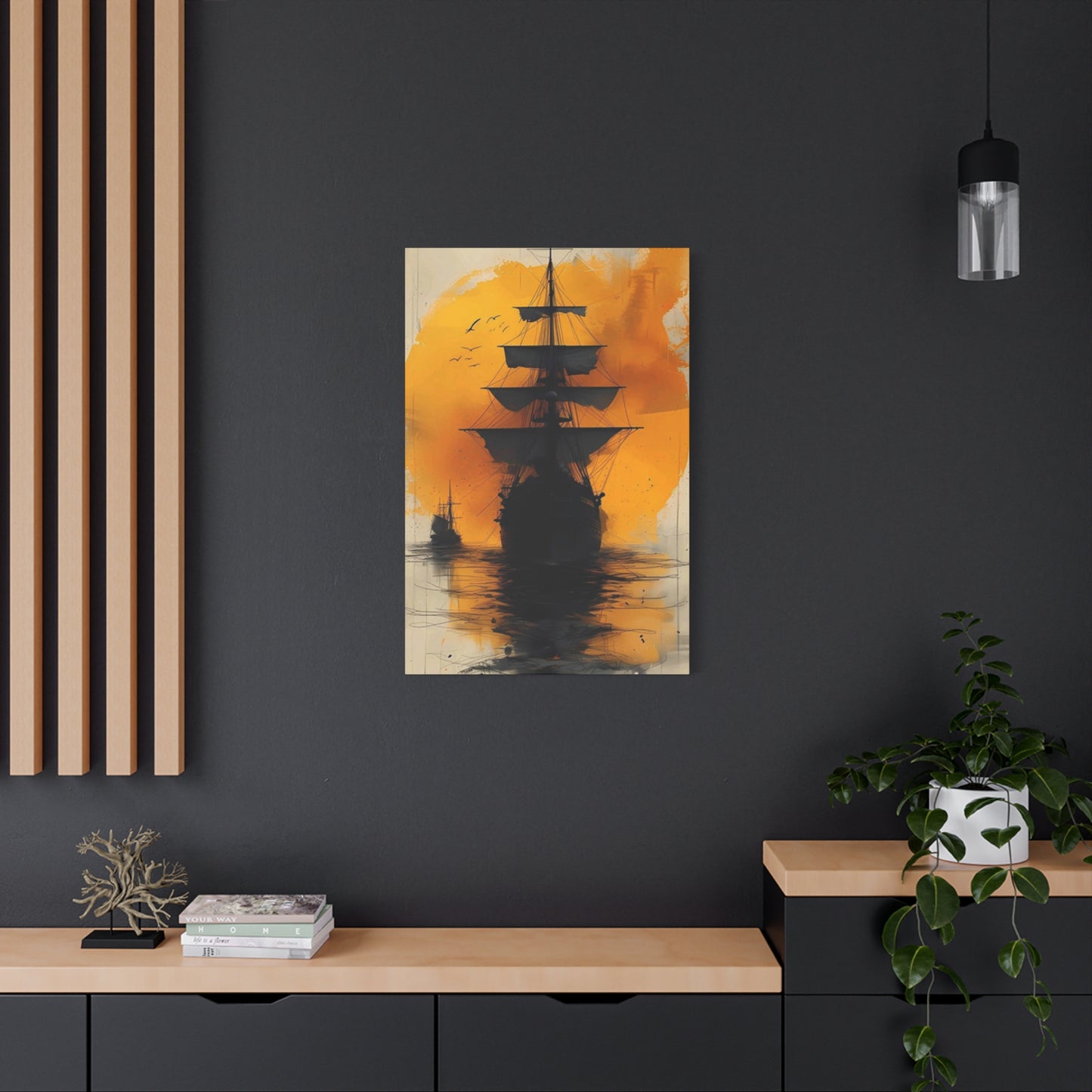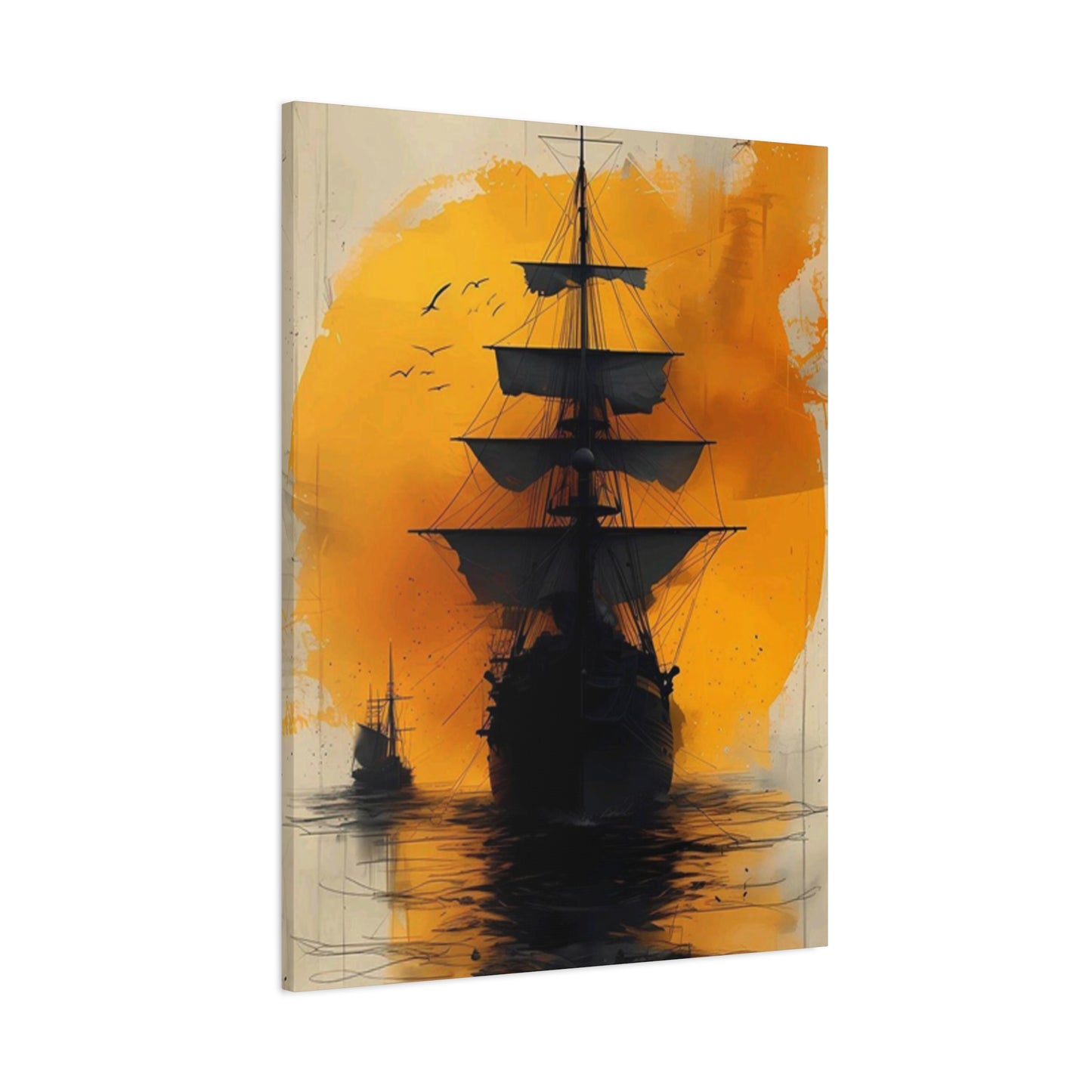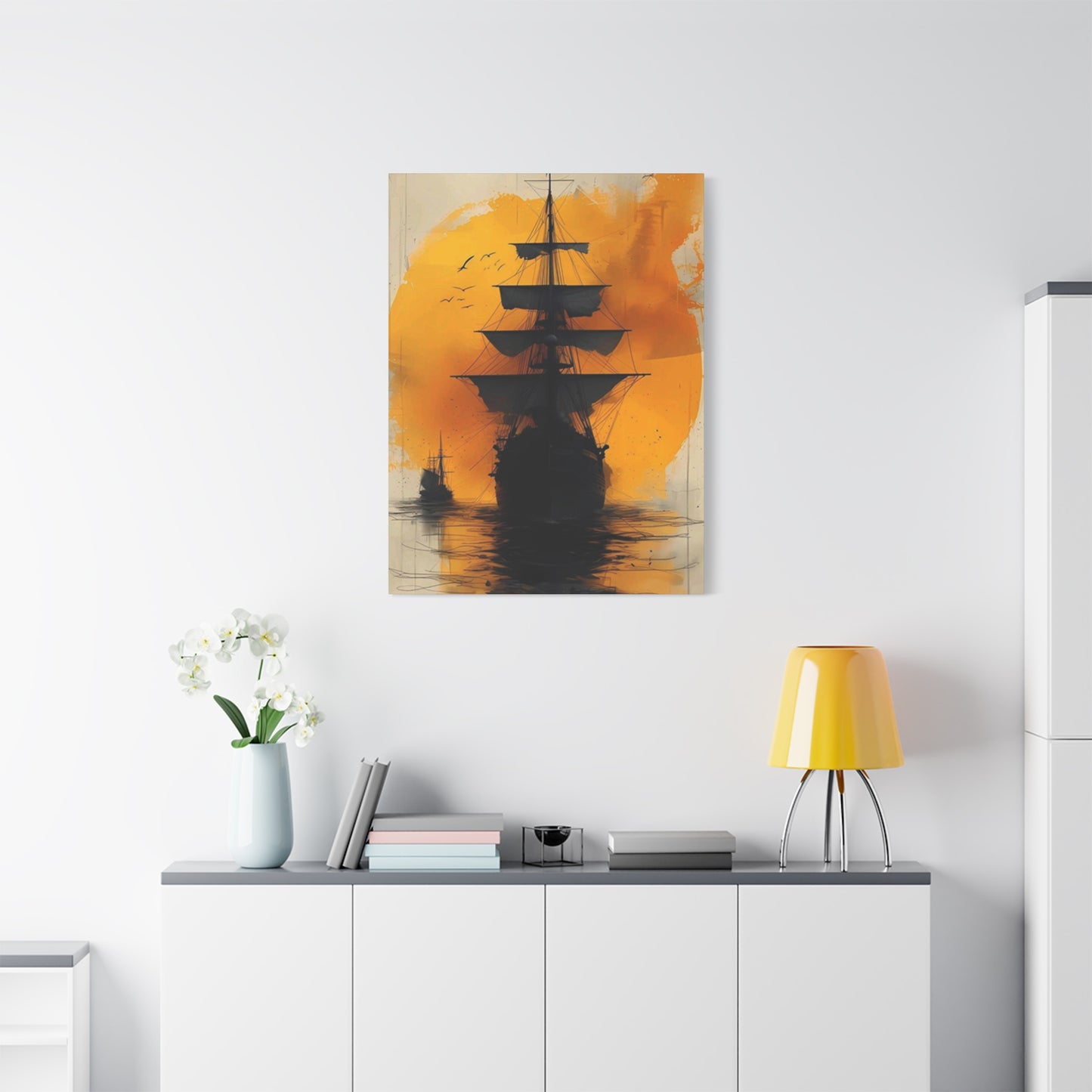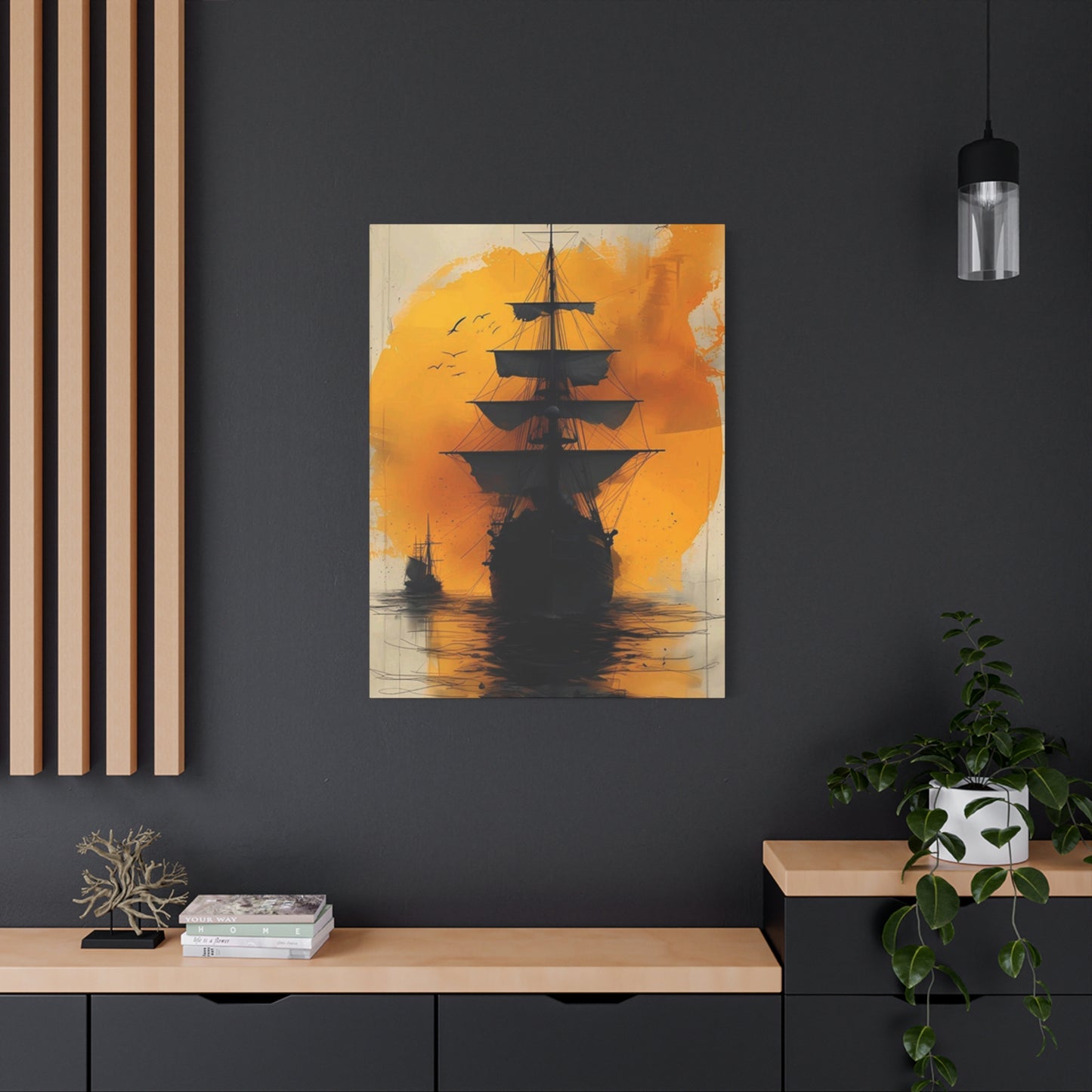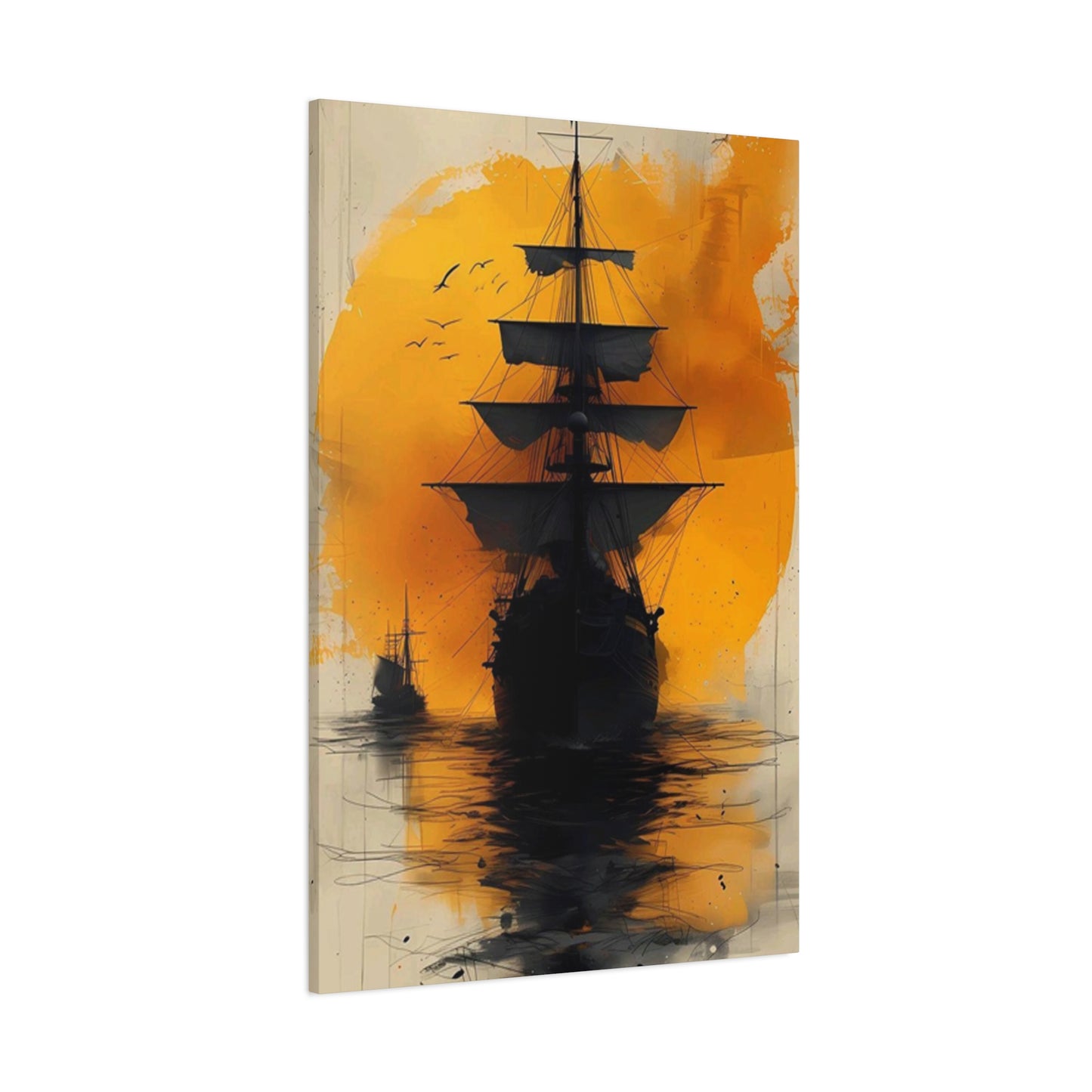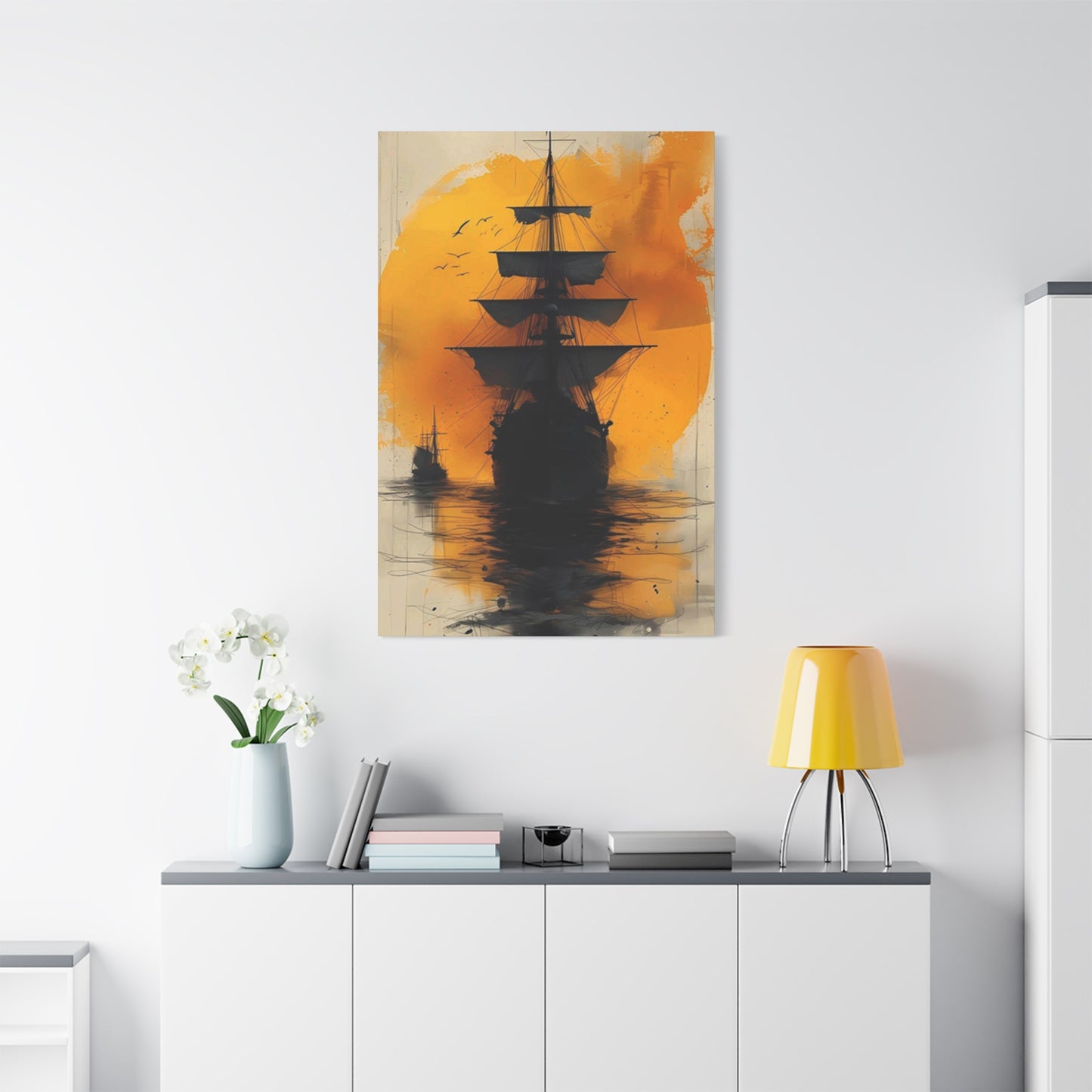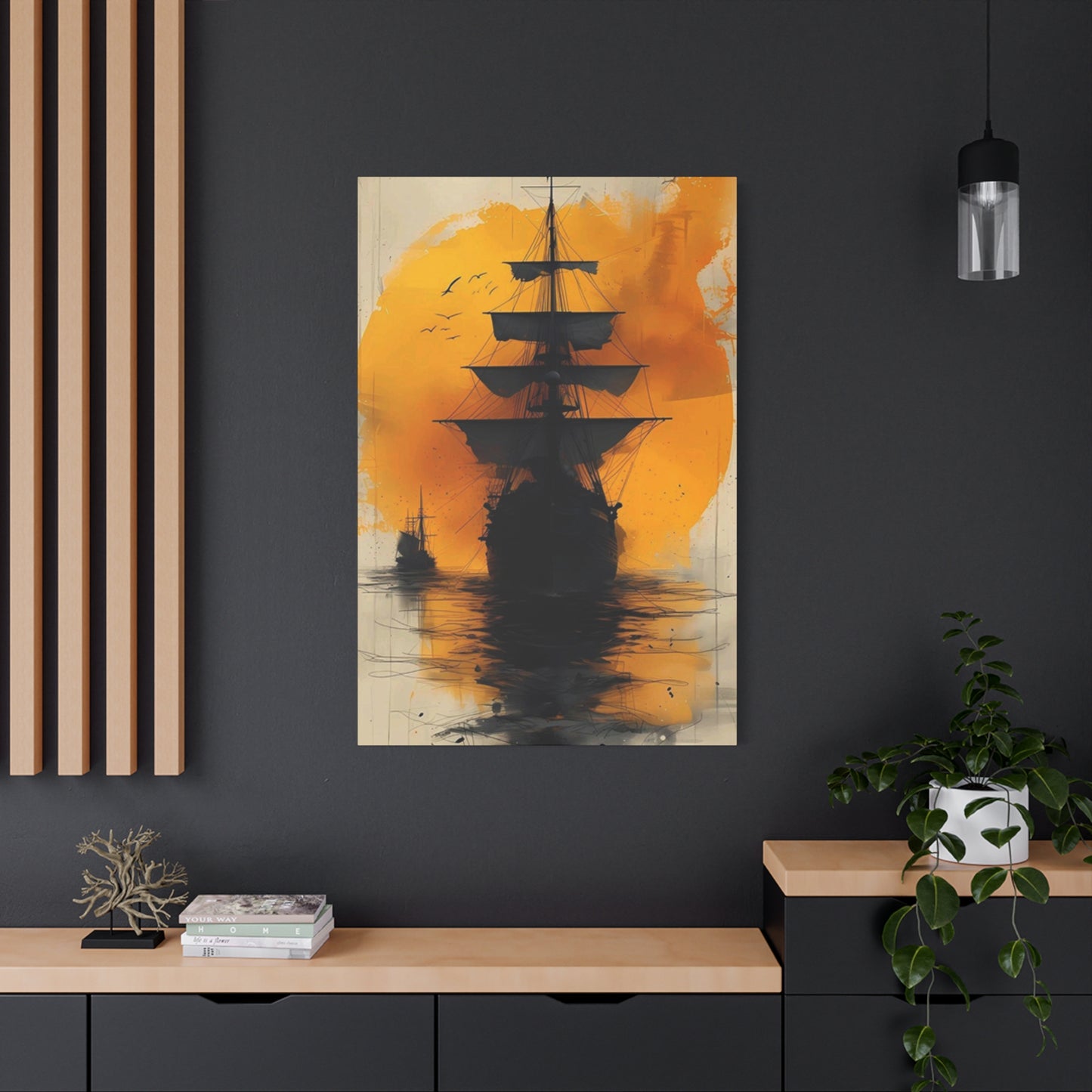Nautical Elegance: Sailing Ship wall-art That Captivate Your Living Space
Decorating your home with maritime-themed artwork has become increasingly popular among homeowners seeking to infuse their spaces with adventure and sophistication. Sailing ship poster wall art canvas prints represent one of the most timeless and versatile decorating choices available today. These stunning visual pieces transport viewers to distant oceans and bygone eras while adding depth and character to any room.
The appeal of nautical wall art extends far beyond simple decoration. These pieces serve as conversation starters, mood enhancers, and windows into maritime history. Whether you're drawn to the romance of tall ships gliding across moonlit seas or the raw power of vessels battling stormy waters, sailing ship canvas prints offer endless possibilities for personalizing your living environment.
Modern printing technology has revolutionized how we experience maritime art in our homes. High-quality canvas prints now capture every detail of these magnificent vessels, from the intricate rigging to the billowing sails catching ocean winds. The texture and depth achievable through contemporary canvas printing techniques create museum-quality reproductions that rival original paintings at a fraction of the cost.
Historical Significance of Maritime Art in Home Decoration
Maritime art has adorned the walls of homes for centuries, originally serving both decorative and practical purposes. Sailors and their families often displayed ship portraits as reminders of voyages and maritime heritage. These pieces held deep personal meaning, connecting families to the sea and the adventures it represented.
The tradition of collecting ship art evolved from necessity to luxury as maritime trade flourished throughout the 18th and 19th centuries. Wealthy merchants commissioned detailed paintings of their vessels, creating a visual record of their commercial success. These commissioned works often featured meticulous attention to detail, capturing not only the ships themselves but also the surrounding seascapes and atmospheric conditions.
During the golden age of sailing, ship portraits became status symbols among the maritime community. Captains and ship owners took pride in displaying accurate representations of their vessels, often commissioning multiple versions for different locations. This practice established a rich tradition of maritime art that continues to influence contemporary home decoration choices.
The democratization of art through mass production and digital printing has made maritime masterpieces accessible to a broader audience. Modern homeowners can now enjoy museum-quality reproductions of famous naval paintings without the astronomical costs associated with original works. This accessibility has led to a renaissance in maritime-themed interior design, with sailing ship canvas prints leading the trend.
Canvas prints have emerged as the preferred medium for maritime art reproduction due to their ability to capture the texture and depth essential to seascape paintings. The fabric surface mimics the traditional canvas used by maritime artists, creating an authentic viewing experience that paper prints cannot match. This authenticity factor has made canvas prints particularly popular among serious collectors and interior design enthusiasts.
Choosing the Perfect Sailing Ship Canvas Print for Your Space
Selecting the ideal sailing ship canvas print requires careful consideration of multiple factors that will influence both the visual impact and longevity of your purchase. The size of your space plays a crucial role in determining the appropriate dimensions for your artwork. Large walls benefit from oversized canvas prints that create dramatic focal points, while smaller spaces require more modest sizing to maintain proper proportions.
Color coordination between your chosen artwork and existing decor elements ensures harmonious integration within your room's design scheme. Traditional maritime prints often feature deep blues, weathered browns, and muted grays that complement both contemporary and classic interior styles. However, modern interpretations of sailing ship art may incorporate bolder color palettes that work well in eclectic or contemporary settings.
The style of sailing vessel depicted in your chosen print should align with your personal preferences and the overall aesthetic of your space. Classic tall ships with full rigging appeal to those seeking traditional nautical ambiance, while sleek racing yachts might better suit modern, minimalist environments. Historical warships add drama and gravitas to formal spaces, whereas peaceful harbor scenes create tranquil atmospheres perfect for bedrooms or reading nooks.
Quality considerations extend beyond mere aesthetics to encompass the technical aspects of canvas printing and construction. Premium canvas prints utilize high-grade cotton or cotton-blend fabrics that resist stretching and maintain their shape over time. The printing process should employ archival-quality inks that resist fading and color shifting, ensuring your investment maintains its visual appeal for decades.
Frame options significantly impact both the appearance and protection of your canvas print. Gallery-wrapped canvases eliminate the need for traditional frames while creating clean, contemporary presentations. Alternatively, floating frames add sophistication while providing additional protection for the canvas edges. Custom framing options allow for complete personalization but require careful coordination with professional framers experienced in handling canvas prints.
Popular Sailing Ship Styles for Wall Art
The diversity of sailing vessels throughout maritime history provides endless inspiration for wall art choices. Each ship type carries its own historical significance and visual appeal, allowing homeowners to select pieces that resonate with their personal interests and decorating goals. Understanding these different styles helps inform purchasing decisions and ensures satisfaction with your chosen artwork.
Tall ships represent the pinnacle of sailing vessel design and remain the most popular subject matter for maritime wall art. These majestic vessels, with their towering masts and complex rigging systems, create dramatic visual impact in any space. Famous examples include clipper ships that revolutionized ocean commerce and naval frigates that dominated maritime warfare during the age of sail.
Schooners offer a different aesthetic appeal with their fore-and-aft rigged sails and sleek hull designs. These vessels were prized for their speed and maneuverability, making them popular choices for both commercial and recreational use. Artwork featuring schooners often captures their graceful lines and efficient sail configurations, appealing to those who appreciate functional beauty in maritime design.
Modern yachts and racing sailboats provide contemporary alternatives to historical vessel depictions. These streamlined designs emphasize speed and performance, featuring clean lines and innovative sail configurations. Such artwork appeals to sailing enthusiasts and those seeking modern interpretations of maritime themes for contemporary interior designs.
Traditional fishing boats and coastal vessels offer more intimate and approachable subject matter for maritime art. These working boats represent the daily lives of maritime communities and often feature weathered appearances that add character and authenticity to artwork. Such pieces work particularly well in casual or rustic interior settings.
Warships and naval vessels add drama and historical significance to maritime art collections. These powerful vessels showcase the might and grandeur of naval forces throughout history. From ancient galleons to modern naval destroyers, military vessels provide compelling subject matter for those interested in maritime history and military heritage.
Canvas Print Quality and Materials
The foundation of any exceptional canvas print lies in the quality of materials used during the production process. Premium canvas materials significantly impact both the appearance and longevity of your maritime artwork. Understanding the differences between various canvas types helps ensure you select prints that will maintain their beauty and structural integrity for years to come.
Cotton canvas remains the gold standard for high-quality prints due to its natural fiber composition and excellent ink absorption properties. Pure cotton canvases provide superior color reproduction and resist stretching better than synthetic alternatives. The natural texture of cotton enhances the artistic quality of maritime prints, creating depth and dimension that complement seascape subjects.
Cotton-blend canvases incorporate synthetic fibers to enhance durability while maintaining the desirable characteristics of natural cotton. These blends often provide improved resistance to environmental factors while reducing costs compared to pure cotton options. For most home applications, high-quality cotton blends offer excellent performance at reasonable price points.
Synthetic canvas materials, while less expensive, may not provide the same longevity or visual quality as natural fiber options. However, advances in synthetic fiber technology have produced some acceptable alternatives for budget-conscious buyers. When considering synthetic options, prioritize products from reputable manufacturers who specify their material compositions and printing processes.
The weight and thickness of canvas material directly influence the final product's durability and appearance. Heavier canvases resist sagging and maintain their shape better over time, while lighter materials may require more frequent attention to prevent warping or stretching. Professional-grade canvas typically ranges from 300 to 400 GSM (grams per square meter), providing optimal balance between durability and workability.
Canvas preparation processes, including priming and coating applications, significantly affect print quality and longevity. Properly prepared canvases feature smooth, receptive surfaces that allow inks to penetrate evenly while preventing bleeding or color migration. High-quality preparation ensures consistent color reproduction across the entire print surface.
Printing Technologies and Their Impact on Quality
Modern digital printing technologies have revolutionized the canvas print industry, enabling reproduction quality that rivals traditional painting techniques. Understanding these technologies helps buyers make informed decisions about their maritime artwork purchases and ensures they receive products that meet their quality expectations and budget requirements.
Inkjet printing technology dominates the canvas print market due to its versatility and ability to produce fine detail with accurate color reproduction. High-end inkjet systems utilize multiple color cartridges to achieve broader color gamuts and smoother gradations, particularly important for maritime scenes that feature subtle sky and water colorations.
Giclée printing represents the premium tier of canvas reproduction technology, utilizing archival pigment inks and precision spray mechanisms to create museum-quality reproductions. This process produces prints with exceptional detail resolution and color accuracy, making it ideal for reproducing fine art paintings and photographs of sailing vessels.
Latex printing technology offers unique advantages for canvas applications, including enhanced durability and reduced environmental impact. Latex inks bond more effectively with canvas fibers, creating prints that resist scratching and fading while maintaining vibrant colors. This technology particularly benefits maritime prints exposed to varying humidity levels common in coastal environments.
Solvent-based printing systems provide excellent outdoor durability but may not be suitable for all canvas applications due to chemical odors and environmental concerns. While less common for indoor maritime art, solvent prints excel in applications where extreme durability is required, such as boat clubs or outdoor maritime displays.
UV printing technology enables direct printing onto various surfaces, including specially prepared canvases, while providing exceptional durability against sun exposure and moisture. This technology works well for maritime prints destined for bright rooms or locations with high natural light exposure, where traditional prints might fade prematurely.
Color Accuracy and Reproduction
Achieving accurate color reproduction in sailing ship canvas prints requires careful attention to multiple factors throughout the production process. Maritime scenes present unique challenges due to their complex color palettes, ranging from deep ocean blues to subtle sky gradations and weathered ship materials that require precise tonal reproduction.
Color management systems ensure consistency between digital files and final printed products by calibrating equipment and establishing standardized color profiles. Professional print services utilize sophisticated color management workflows that account for canvas characteristics, ink properties, and viewing conditions to achieve optimal color accuracy.
The color gamut capabilities of different printing technologies significantly impact the final appearance of maritime artwork. Wide-gamut printing systems can reproduce a broader range of colors, particularly important for capturing the subtle variations in ocean blues and sky tones that characterize seascape paintings.
Ink quality directly influences both color accuracy and print longevity, with archival pigment inks providing superior performance compared to dye-based alternatives. Pigment inks resist fading and color shifting over time, ensuring your maritime artwork maintains its intended appearance for decades when properly displayed and maintained.
Lighting conditions in your display environment affect how colors appear in your canvas prints, making it important to consider both natural and artificial illumination when selecting and positioning maritime artwork. Prints optimized for specific lighting conditions may appear differently under alternative light sources, emphasizing the importance of proper lighting design.
Monitor calibration plays a crucial role when selecting maritime canvas prints online, as uncalibrated displays may not accurately represent the colors you'll receive in your final product. Professional color calibration tools help ensure what you see on screen closely matches your delivered canvas print.
Size Considerations for Different Room Types
Selecting appropriate dimensions for sailing ship canvas prints requires careful analysis of your space and design objectives. The relationship between artwork size and room proportions significantly impacts visual impact and overall decorating success. Understanding these relationships helps ensure your maritime artwork enhances rather than overwhelms your living space.
Large rooms with high ceilings can accommodate oversized canvas prints that create dramatic focal points and fill wall space proportionally. Maritime scenes particularly benefit from generous sizing, as the expansive nature of ocean environments translates well to large-format presentations that immerse viewers in the nautical atmosphere.
Medium-sized rooms require more careful size selection to maintain proper visual balance without overwhelming the space. Canvas prints measuring 24 to 36 inches in width typically work well in standard living rooms and bedrooms, providing sufficient visual impact while leaving room for complementary decorative elements.
Small spaces, including apartments and compact rooms, benefit from carefully proportioned maritime artwork that enhances without dominating. Canvas prints ranging from 16 to 24 inches create attractive focal points without overwhelming limited wall space, while vertical orientations can help create the illusion of increased ceiling height.
Multi-panel canvas prints offer flexible sizing options that adapt to various wall configurations and room dimensions. Triptych and multi-panel maritime scenes allow for creative arrangements that can span larger wall areas while breaking up the visual mass into more manageable components.
Custom sizing options provided by many canvas print services enable perfect fitting for unique wall spaces and specific design requirements. This flexibility particularly benefits homeowners with non-standard wall dimensions or those seeking to create gallery walls incorporating maritime themes with other artwork.
Framing Options for Canvas Prints
The presentation method you choose for your sailing ship canvas prints significantly impacts both their visual appeal and protective qualities. Various framing and mounting options cater to different aesthetic preferences, budgets, and preservation requirements. Understanding these options helps ensure your maritime artwork is displayed to its best advantage.
Gallery wrapping represents the most popular presentation method for canvas prints, eliminating the need for traditional frames while creating clean, contemporary appearances. This technique stretches the printed canvas around wooden stretcher bars, with the image extending around the edges for a finished look from all angles.
Museum wrapping differs from gallery wrapping by utilizing solid-colored or neutral edges instead of continuing the image around the sides. This approach works well when the main image shouldn't be compromised by edge wrapping and provides a more traditional gallery presentation suitable for formal settings.
Floating frames create sophisticated presentations while providing protection for canvas edges and corners. These frames hold the canvas slightly away from the backing, creating shadow effects that enhance the dimensional quality of maritime artwork. Various materials and finishes allow coordination with existing room decor.
Traditional picture frames adapted for canvas mounting offer classic presentations that work well in traditional or formal interior settings. These frames require careful attention to mounting methods to prevent damage to the canvas material while ensuring secure, long-term display capability.
Custom framing solutions provide unlimited flexibility for unique presentation requirements or specific design objectives. Professional framers experienced with canvas materials can create specialized mounting systems that address particular environmental concerns or aesthetic preferences while ensuring proper artwork preservation.
Placement Strategies for Maximum Visual Impact
The positioning of sailing ship canvas prints within your living space dramatically influences their effectiveness as decorative elements and focal points. Strategic placement considers factors including viewing angles, lighting conditions, furniture arrangements, and overall room flow to maximize the visual impact of your maritime artwork.
Eye-level placement represents the fundamental rule for most artwork positioning, with the center of your canvas print positioned approximately 57 to 60 inches from the floor. This standard height ensures comfortable viewing for most people while creating proper visual relationships with surrounding furniture and architectural elements.
Above-furniture placement requires careful attention to proportional relationships and clearance spacing. Canvas prints positioned over sofas, credenzas, or beds should maintain 6 to 12 inches of clearance while extending across approximately two-thirds of the furniture width to create visually pleasing arrangements.
Corner positioning can transform underutilized spaces into attractive focal points, particularly effective for maritime artwork that benefits from intimate viewing distances. Strategic lighting in corner installations enhances the dramatic impact of sailing ship scenes while creating cozy atmospheric effects.
Gallery wall integration allows maritime canvas prints to work harmoniously with other artwork types, creating cohesive collections that tell broader decorative stories. Careful planning ensures proper spacing, visual balance, and thematic coordination among different pieces within the gallery arrangement.
Statement wall applications utilize large or multiple maritime canvas prints to create dramatic focal points that dominate entire wall surfaces. This approach works particularly well in open floor plans where expansive wall areas require substantial artwork to maintain proportional relationships with the space.
Lighting Considerations for Canvas Art
Proper illumination dramatically enhances the visual impact and color accuracy of sailing ship canvas prints while protecting them from premature deterioration. Understanding lighting principles and available fixture options helps create optimal viewing conditions that showcase your maritime artwork to its best advantage.
Natural lighting provides the most accurate color representation for most canvas prints but requires careful management to prevent damage from excessive UV exposure. Positioning maritime artwork away from direct sunlight while maximizing indirect natural illumination creates ideal viewing conditions without risking color fading or canvas deterioration.
Picture lighting systems offer focused illumination specifically designed for artwork applications, providing even distribution across the canvas surface while minimizing glare and hot spots. Battery-operated and hardwired options accommodate different installation requirements and design preferences.
Track lighting systems provide flexible illumination solutions that adapt to changing artwork arrangements and room configurations. Adjustable track heads allow precise light positioning and intensity control, particularly beneficial for rooms featuring multiple maritime pieces or rotating artwork displays.
Ambient room lighting influences how canvas prints appear under normal viewing conditions, making it important to consider both natural and artificial light sources when planning your display strategy. LED lighting options provide consistent color temperature while generating minimal heat that could damage canvas materials.
Accent lighting creates dramatic effects that enhance the atmospheric qualities of maritime artwork, particularly effective for sailing ship scenes featuring dramatic skies or stormy seas. Carefully positioned accent lights can create mood lighting that complements the nautical theme while providing functional illumination.
Care for Canvas Prints
Proper maintenance ensures your sailing ship canvas prints retain their beauty and structural integrity throughout their display lifetime. Understanding appropriate care techniques and common threats helps protect your investment while maximizing the longevity of your maritime artwork collection.
Regular dusting prevents particle accumulation that can dull colors and create surface texture irregularities. Soft-bristled brushes or lint-free cloths work best for canvas cleaning, using gentle motions that follow the canvas grain to avoid surface damage. Vacuum cleaners with brush attachments provide effective cleaning for larger pieces when used with appropriate caution.
Humidity control prevents canvas expansion and contraction that can lead to warping, sagging, or cracking over time. Maintaining relative humidity levels between 40 and 60 percent creates optimal conditions for canvas stability while preventing mold growth that could damage both the canvas and printing inks.
Temperature stability protects canvas prints from thermal stress that can cause material degradation and color shifting. Avoiding placement near heat sources, air conditioning vents, or areas with significant temperature fluctuations helps ensure long-term stability and appearance retention.
UV protection prevents color fading and canvas deterioration caused by harmful ultraviolet radiation present in both natural sunlight and certain artificial lighting sources. UV-filtering glass, window films, or appropriate lighting choices help minimize exposure while maintaining proper illumination for viewing.
Professional cleaning services provide specialized care for valuable or heavily soiled canvas prints that require more intensive maintenance than routine home care can provide. These services utilize appropriate cleaning agents and techniques that preserve both canvas and ink integrity while removing accumulated contaminants.
Seasonal Decorating with Maritime Themes
Incorporating sailing ship canvas prints into seasonal decorating schemes adds versatility and year-round appeal to your maritime artwork collection. Understanding how nautical themes complement different seasonal aesthetics helps create dynamic room designs that evolve throughout the year while maintaining cohesive decorative themes.
Spring decorating benefits from maritime artwork featuring fresh ocean breezes, calm seas, and sailing vessels under clear blue skies. These optimistic scenes complement seasonal color palettes featuring light blues, crisp whites, and natural greens that echo the renewal themes associated with springtime.
Summer collections emphasize the adventurous and recreational aspects of sailing, featuring artwork that captures the excitement of ocean voyages and coastal exploration. Bright, vibrant maritime scenes work well with summer decorating schemes that celebrate outdoor living and warm weather activities.
Autumn maritime themes often focus on more dramatic sailing conditions, featuring storms, rough seas, and hardy vessels battling challenging weather. These powerful images complement fall color schemes featuring deeper blues, grays, and earth tones that reflect seasonal transitions.
Winter decorating incorporates maritime artwork that emphasizes the cozy, contemplative aspects of nautical themes. Historical sailing scenes, harbor views, and quiet seascapes create atmospheres that complement winter's indoor focus and intimate gathering spaces.
Holiday integration allows maritime canvas prints to participate in seasonal celebrations through complementary decorating elements and lighting treatments. Nautical themes adapt well to various holiday celebrations, particularly those emphasizing travel, exploration, or maritime heritage.
Color Schemes That Complement Nautical Art
Successful integration of sailing ship canvas prints requires careful consideration of color relationships between the artwork and surrounding decorative elements. Understanding color theory and nautical color traditions helps create harmonious room designs that enhance rather than compete with your maritime artwork.
Classic nautical color schemes emphasize the traditional navy and white combination that reflects maritime uniform traditions and sailing aesthetics. This timeless palette provides neutral backgrounds that allow maritime artwork to serve as focal points while maintaining sophisticated, uncluttered appearances.
Coastal color schemes incorporate broader palettes including various blues, sandy beiges, and seafoam greens that echo natural beach and ocean environments. These relaxed color combinations create casual, welcoming atmospheres that complement both traditional and contemporary maritime artwork.
Monochromatic blue schemes utilize various shades and tints of blue to create sophisticated, cohesive environments that naturally complement most maritime artwork. This approach provides visual continuity while allowing artwork details and textures to serve as primary focal points within the space.
Earth tone combinations featuring warm browns, weathered grays, and muted golds reflect the colors of aged ship materials and maritime equipment. These warmer palettes create cozy, masculine environments that work particularly well with historical sailing vessel artwork and traditional interior styles.
Contemporary color schemes may incorporate bold accent colors or unexpected combinations that create modern interpretations of nautical themes. These approaches allow maritime artwork to function within eclectic or contemporary design schemes while maintaining their essential nautical character and appeal.
Creating Gallery Walls with Maritime Art
Gallery wall arrangements provide opportunities to create comprehensive maritime art displays that tell broader nautical stories while maximizing wall space utilization. Successful gallery walls require careful planning, appropriate artwork selection, and attention to visual balance and spacing relationships.
Theme development establishes the conceptual framework for your maritime gallery wall, whether focusing on specific historical periods, vessel types, or geographical regions. Consistent themes create cohesive appearances while allowing for variety in artwork sizes, styles, and specific subjects within the maritime category.
Layout planning involves arranging artwork pieces to create balanced, visually appealing compositions before installation. Paper templates or digital planning tools help visualize different arrangements and spacing options, ensuring optimal results before making permanent mounting decisions.
Size variation adds visual interest to gallery walls while creating opportunities for emphasizing particular pieces within the collection. Combining large statement pieces with smaller supporting artwork creates dynamic arrangements that maintain viewer interest and provide multiple focal points.
Spacing considerations ensure proper visual relationships between individual pieces while maintaining overall wall balance. Generally, 2 to 4 inches between pieces provides adequate separation while maintaining collection cohesion, though spacing may vary based on artwork sizes and wall dimensions.
Matting and framing consistency helps unify diverse maritime artwork within gallery wall arrangements. Consistent framing styles or mat colors create visual continuity that allows different subjects and sizes to work harmoniously within the overall composition.
Digital vs Traditional Maritime Art
The choice between digitally created and traditionally painted maritime art significantly impacts the aesthetic qualities, authenticity, and pricing of sailing ship canvas prints. Understanding these differences helps buyers make informed decisions that align with their preferences, budgets, and collecting objectives.
Traditional maritime art encompasses original paintings, watercolors, and other hand-created works that carry the unique characteristics of individual artists and their techniques. These pieces often feature subtle variations and artistic interpretations that digital reproductions may struggle to capture fully.
Digital art creation utilizes computer software and digital tools to produce maritime scenes that can achieve photorealistic detail and precision impossible with traditional methods. Digital artists can incorporate multiple reference sources and make unlimited revisions to achieve desired results.
Reproduction considerations differ significantly between traditional and digital source material, with original paintings requiring careful photography and color correction to achieve accurate canvas print reproductions. Digital files can maintain their original quality throughout the printing process without interpolation or quality loss.
Authenticity questions arise when considering the relative merits of traditional vs digital maritime art, with collectors often preferring traditionally created works for their handcrafted qualities and artistic heritage. However, digital art offers unique creative possibilities unavailable to traditional artists.
Pricing structures typically favor digital maritime art for canvas prints, as licensing costs and reproduction rights generally cost less than traditional art licensing. This accessibility allows broader audiences to enjoy high-quality maritime artwork without the premium prices associated with traditional art reproductions.
Historical Maritime Art Reproductions
Reproducing famous maritime paintings as canvas prints provides affordable access to masterpieces that would otherwise remain in museums or private collections. These reproductions allow art lovers to enjoy significant works while supporting their maritime decorating themes with historically important and aesthetically exceptional pieces.
Museum collections worldwide contain thousands of maritime paintings spanning centuries of nautical art development. Many institutions now license reproduction rights for their collections, making previously inaccessible masterpieces available as high-quality canvas prints for home decoration.
Artist estates and foundations often control reproduction rights for more recent maritime artists, creating opportunities for authorized reproductions that support artistic legacies while providing collectors with authentic representation of important works.
Copyright considerations affect the availability and pricing of maritime art reproductions, with older works in public domain offering more affordable options than contemporary pieces requiring licensing agreements and royalty payments.
Quality standards for historical reproductions should emphasize color accuracy and detail preservation to maintain the artistic integrity of original works. The best reproductions utilize high-resolution scanning and careful color matching to create faithful representations of original paintings.
Documentation and provenance information enhance the value and educational aspects of historical maritime art reproductions. Quality reproductions include information about original works, artists, and historical contexts that enrich the viewing experience and collecting significance.
Custom Maritime Canvas Prints
Personalized maritime canvas prints offer unique opportunities to create artwork that reflects individual experiences, preferences, and connections to sailing and ocean environments. Custom options range from modified existing images to completely original commissioned works tailored to specific requirements and spaces.
Photography services specialize in maritime subjects, offering custom canvas prints from original photographs of sailing vessels, seascapes, and coastal scenes. These services can work with your photographs or create new images according to your specifications and location preferences.
Digital art commissioning allows for completely customized maritime scenes incorporating specific vessels, locations, or historical elements according to your preferences. Digital artists can combine multiple reference sources to create unique compositions impossible to achieve through photography alone.
Text and personalization options enable the addition of boat names, dates, coordinates, or other meaningful information to maritime canvas prints. These personal touches create commemorative pieces that celebrate specific sailing experiences or maritime connections.
Size and format customization ensures perfect fitting for unique wall spaces or specific design requirements. Custom sizing options accommodate everything from small accent pieces to large statement walls requiring oversized maritime artwork.
Color modifications allow existing maritime artwork to be adjusted for specific color schemes or room requirements. Professional color adjustment services can modify existing images to better coordinate with your interior design while maintaining artistic integrity.
Modern vs Classic Maritime Art Styles
The stylistic approach of maritime artwork significantly influences its compatibility with different interior design schemes and personal aesthetic preferences. Understanding the characteristics and appeal of various artistic styles helps ensure your sailing ship canvas prints align with your decorating objectives and personal taste.
Classic maritime art styles emphasize traditional painting techniques, realistic representations, and historical accuracy in depicting sailing vessels and ocean scenes. These works often feature detailed rigging, accurate ship proportions, and atmospheric effects that capture the romance and adventure of maritime exploration.
Impressionistic maritime art focuses on capturing the essence and feeling of nautical subjects rather than precise detail reproduction. These works often feature loose brushwork, emphasis on light and atmosphere, and emotional interpretations of sailing scenes that create mood and ambiance.
Modern maritime art incorporates contemporary artistic techniques, stylized representations, and sometimes abstract interpretations of nautical themes. These works may feature bold colors, simplified forms, or experimental approaches that appeal to collectors seeking contemporary interpretations of traditional subjects.
Photorealistic styles utilize advanced artistic techniques or digital tools to create extremely detailed and accurate representations of sailing vessels and maritime scenes. These works appeal to viewers who prefer precise detail and documentary-style accuracy in their maritime artwork.
Abstract maritime art interprets nautical themes through non-representational forms, colors, and compositions that suggest rather than literally depict sailing and ocean subjects. These works offer sophisticated aesthetic experiences while maintaining thematic connections to maritime subjects.
Budget-Friendly Options for Maritime Decor
Creating beautiful maritime-themed spaces doesn't require substantial financial investment when you understand the range of affordable options available for sailing ship canvas prints and related decorative elements. Smart shopping strategies and careful selection help achieve impressive results while respecting budget constraints.
Print-on-demand services offer affordable canvas prints by eliminating inventory costs and utilizing efficient production methods. These services typically provide good quality reproductions of maritime artwork at competitive prices, though turnaround times may be longer than traditional retailers.
Digital download options provide the most budget-friendly approach to maritime canvas prints, allowing you to purchase high-resolution files for local printing at competitive prices. This approach requires access to quality printing services but offers maximum flexibility and cost control.
Seasonal sales and promotional offers from canvas print retailers create opportunities for significant savings on maritime artwork purchases. Monitoring favorite retailers for holiday sales, clearance events, and bulk pricing options helps maximize purchasing power while building maritime art collections.
Smaller size options provide affordable entry points into maritime art collecting while still delivering decorating impact when properly positioned and displayed. Multiple smaller pieces can create gallery wall arrangements that rival larger, more expensive single pieces in visual impact.
DIY mounting and framing options reduce overall project costs while providing opportunities for customization and creative involvement in the display process. Basic mounting techniques and simple frame options can produce professional-appearing results at fraction of custom framing costs.
Caring for Your Investment
Protecting your sailing ship canvas prints requires understanding potential threats and implementing appropriate preventive measures that ensure long-term beauty and structural integrity. Proper care extends the life of your maritime artwork while maintaining its aesthetic and financial value.
Environmental monitoring helps identify conditions that could damage canvas prints, including excessive humidity, temperature fluctuations, and air quality issues. Simple monitoring devices provide early warning of problematic conditions that require attention to prevent artwork damage.
Cleaning schedules prevent dust accumulation and surface contamination that could permanently affect canvas appearance or print quality. Regular, gentle maintenance using appropriate tools and techniques prevents minor issues from becoming major restoration problems.
Storage considerations apply when rotating maritime artwork or protecting pieces during home renovations or relocations. Proper storage materials and methods prevent damage during periods when canvas prints aren't actively displayed in your home environment.
Insurance documentation protects valuable maritime art collections against loss, theft, or damage. Photographing your pieces and maintaining purchase records helps support insurance claims and provides important collection documentation for various purposes.
Professional conservation services address serious damage or deterioration that exceeds normal home maintenance capabilities. Understanding when to seek professional help prevents further damage and ensures appropriate restoration techniques that preserve artwork integrity and value.
Integration with Different Interior Design Styles
Sailing ship canvas prints adapt to various interior design styles through careful selection and appropriate presentation methods. Understanding how maritime artwork functions within different decorating approaches helps ensure successful integration that enhances rather than conflicts with your chosen aesthetic.
Traditional interior styles naturally accommodate maritime artwork through their emphasis on historical elements, rich materials, and classic proportions. Sailing ship prints work particularly well in traditional settings when presented in appropriate frames and coordinated with complementary decorative elements.
Contemporary design schemes can incorporate maritime artwork through modern presentation methods and careful attention to color coordination and scale relationships. Clean lines, minimal framing, and strategic positioning help nautical art function successfully within contemporary environments.
Coastal and beachy decorating styles provide natural settings for sailing ship canvas prints, with shared color palettes and thematic connections creating seamless integration. These relaxed design approaches welcome maritime artwork as essential elements rather than mere decorative additions.
Industrial design schemes can accommodate maritime artwork through their shared emphasis on functional beauty and utilitarian aesthetics. The working vessel aspects of sailing ships align well with industrial design principles while adding historical and romantic elements to otherwise stark environments.
Eclectic decorating approaches offer maximum flexibility for incorporating sailing ship canvas prints, allowing creative mixing of styles, colors, and themes that reflect personal taste and collecting interests. Successful eclectic integration requires attention to visual balance and thematic consistency.
The Psychology of Maritime Art in Living Spaces
The presence of sailing ship canvas prints in home environments influences mood, atmosphere, and psychological well-being through their associations with adventure, freedom, and natural beauty. Understanding these psychological impacts helps explain the enduring popularity of maritime themes in interior decoration.
Adventure associations connected to sailing imagery can inspire feelings of wanderlust, exploration, and personal freedom that enhance daily living experiences. These positive associations help create environments that encourage optimism and personal growth while providing escape from routine stresses.
Calming effects result from the natural elements depicted in maritime art, including expansive water views, open skies, and peaceful sailing conditions. These serene images can reduce stress and promote relaxation, making maritime artwork particularly suitable for bedrooms, study areas, and meditation spaces.
Historical connections provide links to maritime heritage and cultural traditions that enrich living environments with educational and emotional depth. These connections can stimulate interest in history, geography, and cultural exploration while providing conversation topics for guests and family members.
Color psychology plays important roles in how maritime artwork affects mood and atmosphere, with blues promoting calm and stability while earth tones provide warmth and comfort. Understanding these relationships helps guide artwork selection based on desired psychological effects in different spaces.
Inspiration factors associated with maritime imagery can motivate personal achievement and goal-setting through their representations of human achievement over natural challenges. Sailing vessels represent human ingenuity, perseverance, and the successful navigation of life's challenges.
Technological Advances in Canvas Printing
Recent developments in digital printing technology have dramatically improved the quality and durability of sailing ship canvas prints while reducing costs and expanding creative possibilities. Staying informed about these advances helps ensure you benefit from the best available reproduction technologies.
High-resolution scanning capabilities now capture artwork details at levels approaching microscopic examination, ensuring canvas print reproductions maintain every nuance of original paintings. These improvements particularly benefit maritime art reproductions where rigging details and atmospheric effects require precise representation.
Color gamut expansions in modern printing systems allow reproduction of colors previously impossible to achieve in print format. Wide-gamut printing particularly benefits maritime artwork by accurately reproducing the subtle variations in ocean and sky colors that define quality seascape painting.
Ink formulations continue advancing with improved fade resistance, color stability, and archival properties that extend the lifespan of canvas prints well beyond previous generations. These improvements ensure your maritime artwork investment maintains its beauty and value for decades.
Substrate developments introduce new canvas materials and preparation methods that improve print quality while reducing environmental impact. Sustainable canvas options appeal to environmentally conscious buyers while maintaining the quality standards expected from premium maritime artwork.
Automation improvements in printing processes reduce costs and improve consistency while enabling smaller minimum orders and faster turnaround times. These efficiencies make custom maritime canvas prints more accessible to individual buyers while maintaining professional quality standards.
Building a Maritime Art Collection
Developing a comprehensive collection of sailing ship canvas prints requires strategic planning, budget management, and clear collecting objectives that guide acquisition decisions over time. Successful collecting creates coherent displays that tell maritime stories while providing personal satisfaction and potential investment value.
Theme development provides focus for collecting efforts while ensuring pieces work together cohesively within your display spaces. Maritime collecting themes might focus on specific historical periods, vessel types, geographical regions, or artistic styles that reflect your interests and decorating objectives.
Budget planning enables systematic collection building without financial strain while ensuring consistent quality standards across all acquisitions. Setting annual collecting budgets and tracking expenses helps maintain control while building valuable maritime art collections over time.
Quality standards should remain consistent throughout your collection to ensure pieces work well together visually and maintain similar value characteristics. Establishing quality criteria early in your collecting journey prevents future regrets about inferior pieces that detract from overall collection quality.
Documentation practices preserve important information about each piece in your collection while providing valuable records for insurance, estate planning, or potential resale purposes. Maintaining purchase records, condition reports, and photographic documentation protects your collecting investment.
Display planning considers how new acquisitions will integrate with existing pieces while accommodating future growth in your maritime art collection. Forward-thinking display strategies prevent space constraints from limiting collecting opportunities while ensuring optimal presentation of all pieces.
Conclusion:
Sailing ship wall art offers a timeless and elegant way to bring the romance, adventure, and tranquility of the open sea into your home. These artworks capture the intricate beauty of classic sailing vessels, the dynamic movement of wind and waves, and the serene expanses of the ocean, transforming walls into captivating focal points. Perfect for living rooms, bedrooms, offices, or study areas, sailing ship wall art elevates interior décor by combining artistry, sophistication, and a sense of maritime adventure.
The appeal of nautical wall art lies in its ability to convey both motion and serenity simultaneously. Detailed depictions of sails billowing against the horizon or ships cutting through gentle waves create a sense of dynamism and realism, while the calming tones of blues, whites, and subtle neutrals foster a peaceful and inviting atmosphere. This balance allows homeowners to infuse interiors with character, narrative, and timeless elegance, reflecting a love for the sea and classic design.
From a design perspective, sailing ship wall art is highly versatile. Large-scale canvases serve as statement pieces, anchoring rooms and drawing the eye, while smaller prints can complement gallery walls or themed collections of nautical or coastal art. These pieces harmonize seamlessly with a variety of décor styles, including coastal, modern, traditional, or eclectic interiors. The neutral and maritime-inspired color palettes ensure effortless integration into existing furnishings, textiles, and architectural elements.
Lighting further enhances the visual impact of these artworks. Directional spotlights can accentuate intricate details, texture, and depth, while soft ambient lighting brings out the atmospheric qualities of the scene. Proper illumination elevates the artwork, creating a gallery-like presence and emphasizing the elegance and drama of the sailing vessels and their surroundings.
In essence, Nautical Elegance: Sailing Ship Wall Art That Captivates Your Living Space demonstrates how maritime-themed décor can blend beauty, storytelling, and sophistication. These artworks do more than decorate—they inspire reflection, evoke the romance of the sea, and infuse interiors with timeless charm. By incorporating sailing ship wall art, homeowners can create spaces that are visually stunning, emotionally resonant, and uniquely expressive, capturing the spirit and elegance of life on the open waters.

















